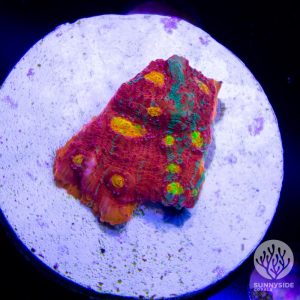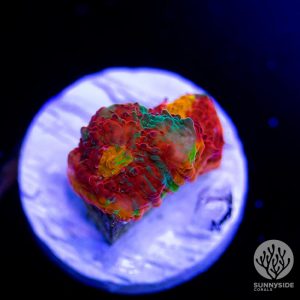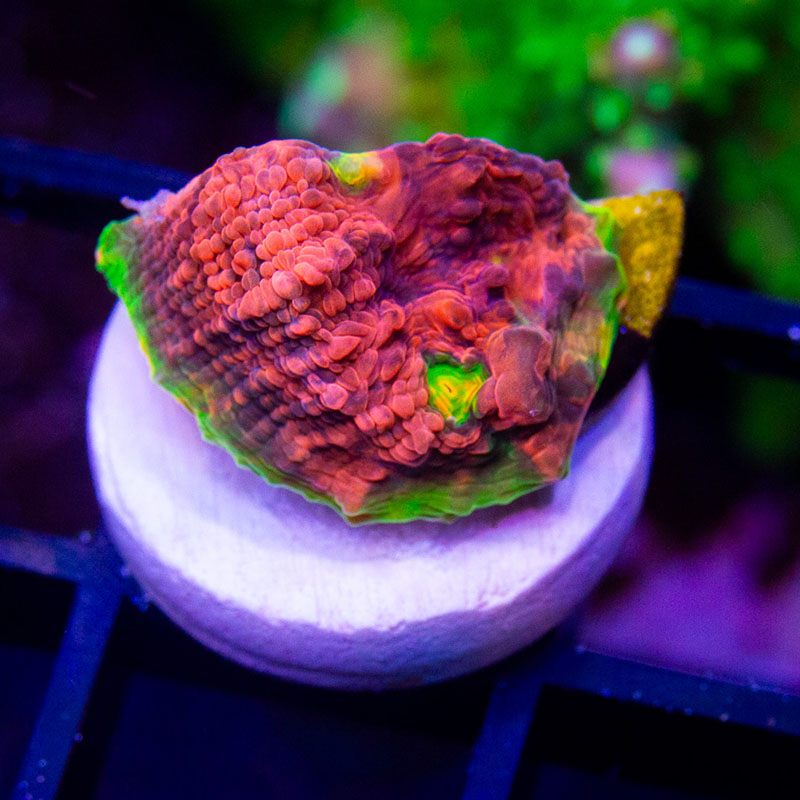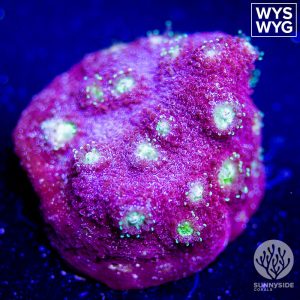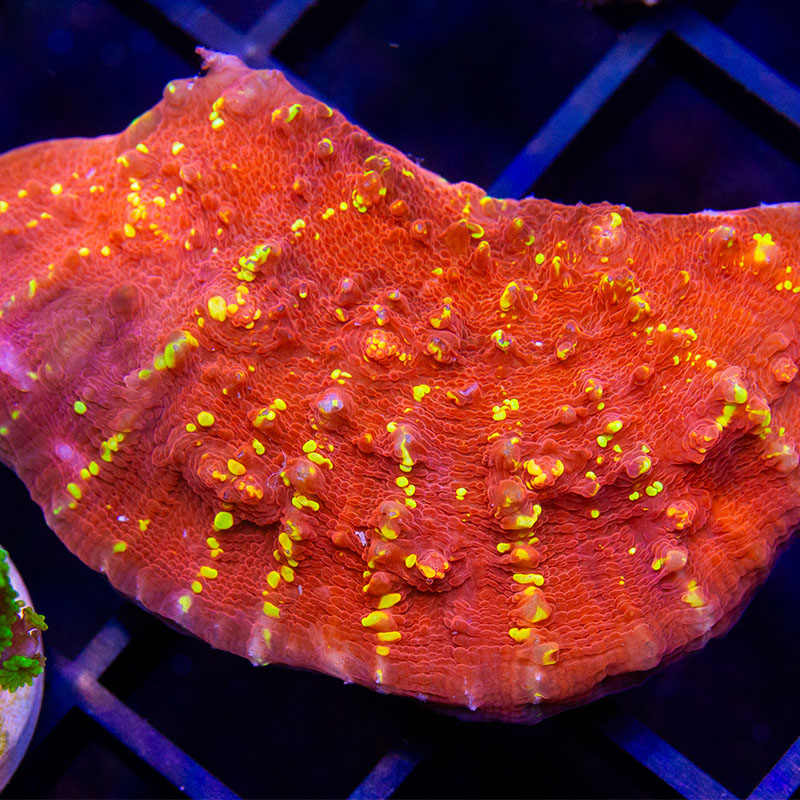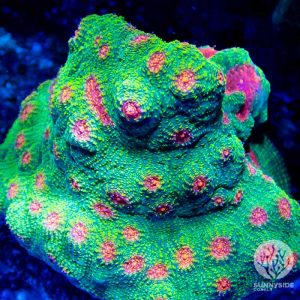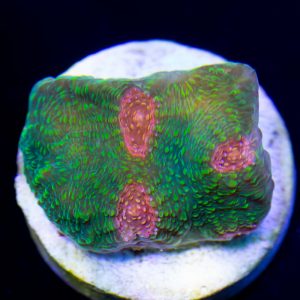What are Chalices?
Chalice corals are one of the most popular types of corals in the hobby. These LPS corals can vary greatly but in general, they are known for extremely colorful and unique patterns. The Chalice category is very broad and because of that, it can be hard to say specifically what is good and bad. Although, they do have some common traits and requirements. Here is a guide to help you get a general idea of how to get started with chalices.
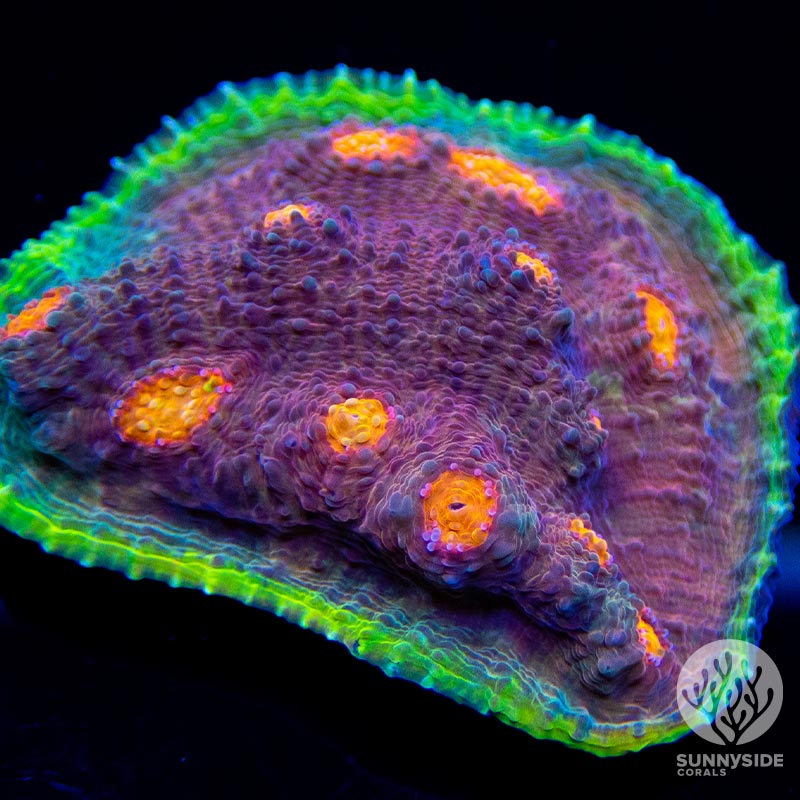
Oxypora Chalice
One of the most common types of Chalice is the Oxypora Chalice. Known for its spiraling thin plates raising from its base. It’s “mouths” are irregularly formed all over the body of the chalice.
See all our Chalices.

Echinophyllia Chalice
Echinophyllia Chalices are often the most colorful of the Chalice family. With stunning multi-colored bodies and uniquely colored mouths, Echinophyllia chalices are typically the favorite in the Chalice category.
See all our Chalices.
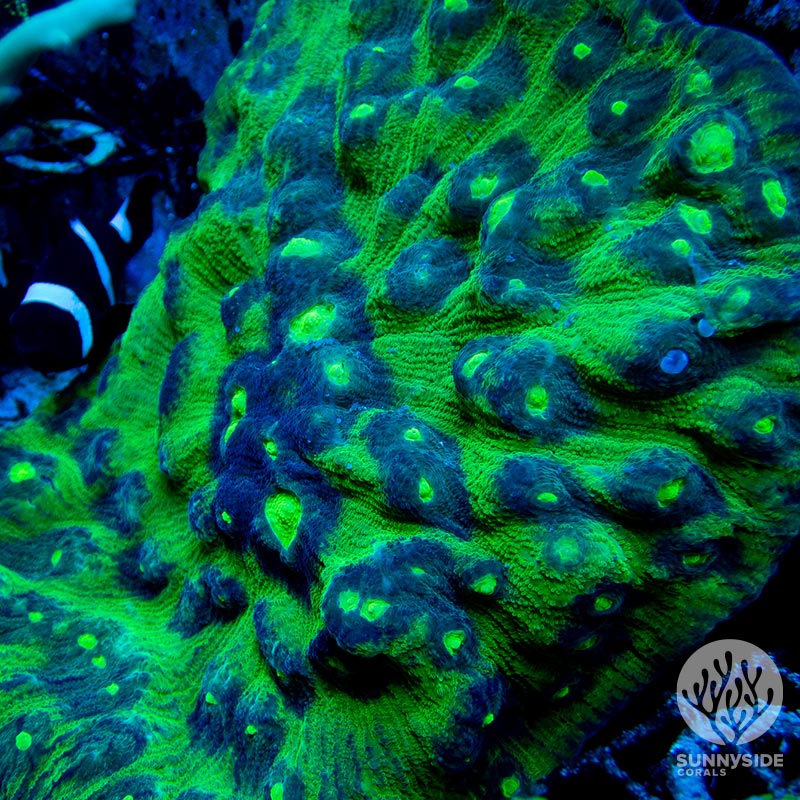
Mycedium Chalice
Mycedium corals are another popular type of chalice. The easiest way to determine if a chalice is a Mycedium is by the direction of the mouths. All of the mouths face towards the outside edge of the coral making it easy to identify.
See all our Chalices.
Chalice Coral Care
How much light do Chalices need?
Chalices do well in medium lighting. You may find that your Chalice does better slightly lower lighting depending on your light system. We run a slightly modified A/B schedule with gen 4 Radions and supplement T-5 lighting for all of our corals. Our Chalices are typically towards the bottom of our tanks in slightly shaded areas to avoid strong lighting.
Flow Requirements
Chalices like low to medium flow. Be mindful of what direction your flow hits your Chalice corals. When they release their stingers, they will float in the direction of the flow and could sting corals close by.
How to place Chalice corals
The biggest thing to keep in mind when placing your Chalices is how close other corals are to it. Chalices are a more aggressive coral and they do release long tentacles that can sting and kill surrounding corals. Positioning your Chalice somewhere where the flow won’t blow the sweepers into another coral is critical. make sure it has enough space as well as the correct low to medium flow and medium lighting will help your Chalice Coral grow best.
Chalice Water Parameters
Some Chalices are more sensitive to changes in water parameters than others. Before adding a Chalice you should make sure that your tank is well established and does not have frequent fluctuations in water parameters. A stable tank is going to be best for all types of Chalices.
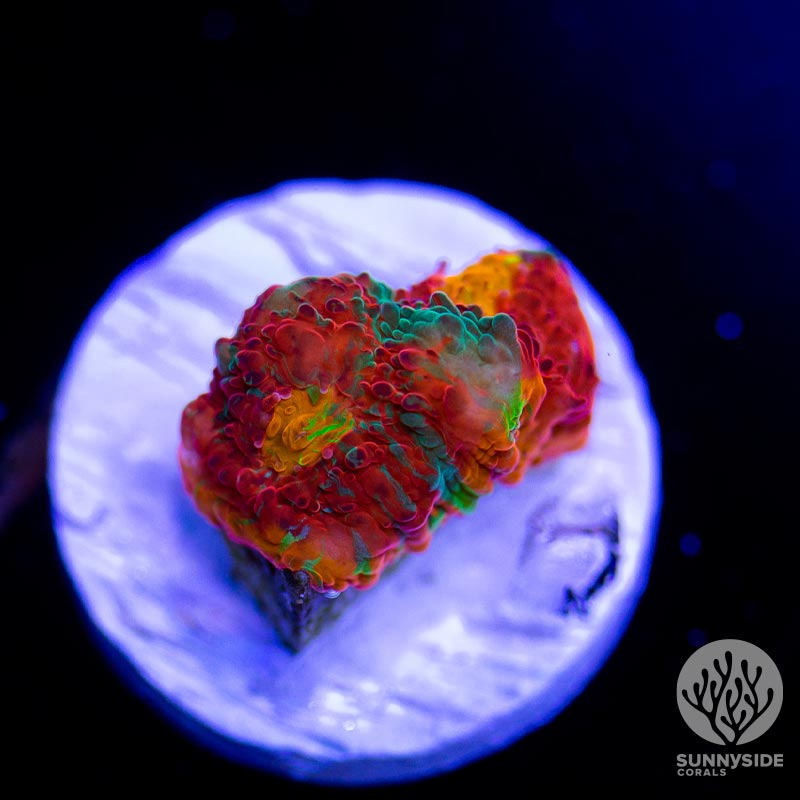
Things to Know Before You Buy a Chalice
Chalice corals are a great coral for anyone with a little experience in the hobby typically. Some Chalices do well in newer tanks but in general, prefer a little more established tank. Chalices can be fairly hands-off and low maintenance once your parameters are stable. Just make sure to give them their space in your tank so that they don’t sting any of your other corals.
Other important factors that play a role in the success of growing Chalice corals are the correct amount of lighting and flow. At Sunnyside Corals, we run a modified AB schedule with Gen 4 radions and supplement T-5 lighting on our corals. Our Chalices typically grow best under medium to low light. Typically at the bottom of your tank or on the edges of your tank are the best spots for your Chalices where they can be slightly shaded and on in direct lighting.
Overall Chalice Corals are a great choice and can be very rewarding. Some Chalices are touchier than others as well as have different growth rates. Please be aware of the needs of the specific type of Chalice when buying. In general the more expensive the Chalice, the harder it is to keep and slower the growth rate.
When can I add Chalices coral to my tank?
Chalices are great for most tanks. They are typically not a great first coral but can be a good one to try after a few months of having a tank. They are not the most resilient to changes in the water and fluctuations. This isn’t true for all Chalices but is generally true. As a general rule of thumb, the more expensive the coral, the touchier it will be. Our Hollywood Stunner Chalice is a great entry-level Chalice to get you started.
Dry Rock
If you started your tank with dry rock you will most likely have to wait 3 to 6 months before you will be able to successfully keep Chalices alive. This is because dry rock can leach phosphate into the water for a very long time. Chalices do well in slightly elevated Phosphate and Nitrate levels and will be a good option for you to test if your tank is ready and your parameters have stabilized are ready for other LPS Corals.
Live Rock
If you started your tank with live rock that process can be dramatically shorter. However, be aware that just because your levels are where they should be, does not mean that your tank is actually ready for any corals. We recommend introducing LPS or Softy corals slowly and monitoring them closely with any new system.
